Products from Leaves

Vapo Rub, and other similar products, contain oil from the leaves and/or wood of the camphor tree (Cinnamomum camphora) native to eastern Asia.

Bay Leaves - Dried leaves of Laurus nobilis (common names include sweet bay, bay laurel, sweet laurel, and laurel), a tree native to the Mediterranean region.

Many cough drops contain oils from the leaves of eucalyptus trees, native to Australia and New Zealand.
Products from flowers/fruits/nuts/seeds

Cloves are the dried flower buds of Eugenia aromatica, a tree native to the Moluccas, or Spice Islands, of Indonesia.
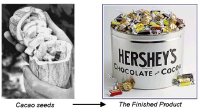
Chocolate is made from the seeds of the cacao tree (Theobroma cacao) native to tropical Africa and South America.
![]()
Apples, and numerous other fruits

In additon to extracts from citrus fruit, many citrus-flavored beverages contain glycerol ester of wood rosin, a by-product of chemical pulping. This chemical compound helps to emulsify the citrus flavorings so that the beverage stays blended.
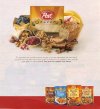
Fruits and Nuts from trees - Pictured here include dates, walnuts, pecans, and almonds (and let's not forget the paper packaging)
Products from bark
![]()
Cork comes from the bark of cork oak (Quercus suber) native to Europe (primarily Spain and Portugal) and North Africa.

The inner core of high quality baseballs contains a cork ball encased within a rubber ball. Cork is the bark of the cork oak tree and natural rubber comes from the "sap" (or more accurately, the latex, a compound produced in defense to a wound) of the rubber tree (Hevea brasiliensis) native to Brazil, and grown in Malaysia, Indonesia, Thailand, India, and China.

Cinnamon is the dried inner bark of Cinnamomum zeylanicum, a tree native to Sri Lanka (formerly known as Ceylon), the southwest coast of India (Malabar), and Myanmar (formerly known as Burma). This type of cinnamon is also known as Ceylon or "true" cinnamon. Most of the cinnamon we use in North America is actually cassia (Cinnamomum cassia), also known as Chinese cinnamon, the dried inner bark of a tree native to southern China.
Products from wood

Wood everywhere! - The framing for the walls, floors, and roof, handrails, porch columns and decking, stairs, siding, the window frames, the doors, the moulding, furniture, shelves, and more!

Guitars, pianos, violins, cellos, oboes, clarinets, and numerous other musical instruments - even drumsticks - all made from wood!
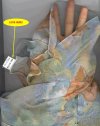
Clothing made from wood? Rayon is a purified cellulose product; cellulose is the primary component of wood fiber. Rayon is produced in a manner similar to papermaking except the cellulose is dissolved, reformed, and spun into a fiber. Cellophane is made in a similar manner. Other products containing rayon include curtains, sheets and bedspreads, upholstery, carpet, and tires.

The inner core of snowboards, skis, and skateboards often contains thin slats of wood, particleboard, medium density fiberboard (MDF), or a combination of these materials.
![]() Appoximately one-fourth of the pencils in the world are made from incense-cedar (Calocedrus decurrens, also known as pencil cedar) native to southern Oregon and northern California. Pencils are also made from tropical hardwoods and plastic. (Information and Image Courtesy of: The Incense Cedar Institute Stockton, CA)
Appoximately one-fourth of the pencils in the world are made from incense-cedar (Calocedrus decurrens, also known as pencil cedar) native to southern Oregon and northern California. Pencils are also made from tropical hardwoods and plastic. (Information and Image Courtesy of: The Incense Cedar Institute Stockton, CA)
![]() Did you ever brush your teeth with wood? You may find a couple of ingredients in toothpaste that come from trees. Cellulose gum is a food thickener, derived from wood, and used in toothpase to keep the paste from oozing down into the bristles. Trans-anethole is a minor component in some toothpastes that serves as a sweetener (wouldn't make much sense to use sugar, would it?). Trans-anethole is derived from turpentine, which itself is derived from the resin of pine trees.
Did you ever brush your teeth with wood? You may find a couple of ingredients in toothpaste that come from trees. Cellulose gum is a food thickener, derived from wood, and used in toothpase to keep the paste from oozing down into the bristles. Trans-anethole is a minor component in some toothpastes that serves as a sweetener (wouldn't make much sense to use sugar, would it?). Trans-anethole is derived from turpentine, which itself is derived from the resin of pine trees.
Products from sap
![]() The gum base in chewing gum is a blend of different latexes from tropical trees, resins from North American pine trees, and synthetic materials such as polyvinyl acetate, waxes, and imitation rubber. Chicle, from the sap of the sapodilla tree (Sapota achras), is one of the primary latexes in gum base.
The gum base in chewing gum is a blend of different latexes from tropical trees, resins from North American pine trees, and synthetic materials such as polyvinyl acetate, waxes, and imitation rubber. Chicle, from the sap of the sapodilla tree (Sapota achras), is one of the primary latexes in gum base.
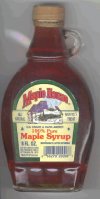
Maple syrup is made from the sap of maple trees, primarily sugar maple (Acer saccharum). In early springtime, the stored sugars in trees begins rising up the stem. This sugar is more concentrated than at other times of the year. A hole is drilled into the stem of the tree, a spout is driven into the hole, and the sap drips out into buckets or into tubing. The sap is then boiled to concentrate the sugars.
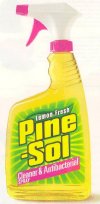
The active ingredient in Pine Sol is pine oil, derived from the resins of pine trees.

Most turpentine is produced as a by-product of the papermaking process. The chemical compounds in turpentine are contained in the relief gases of a pulp mill's digester - the machine where chemicals break down the wood chips.
Microscopic Images
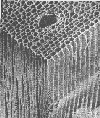
Eastern white pine in 3-D view, magnified 150x (Source: 1980. Panshin, A.J. and C. de Zeeuw, Textbook of Wood Technology, McGraw Hill, page 128).
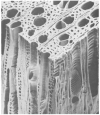
Sweetgum in 3-D view , magnified 350x (Source: 1980. Panshin, A.J. and C. de Zeeuw, Textbook of Wood Technology, McGraw Hill, page 162).

White oak in 3-D view , magnified 120x (Source: 1980. Panshin, A.J. and C. de Zeeuw, Textbook of Wood Technology, McGraw Hill, title page).
